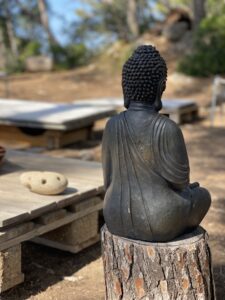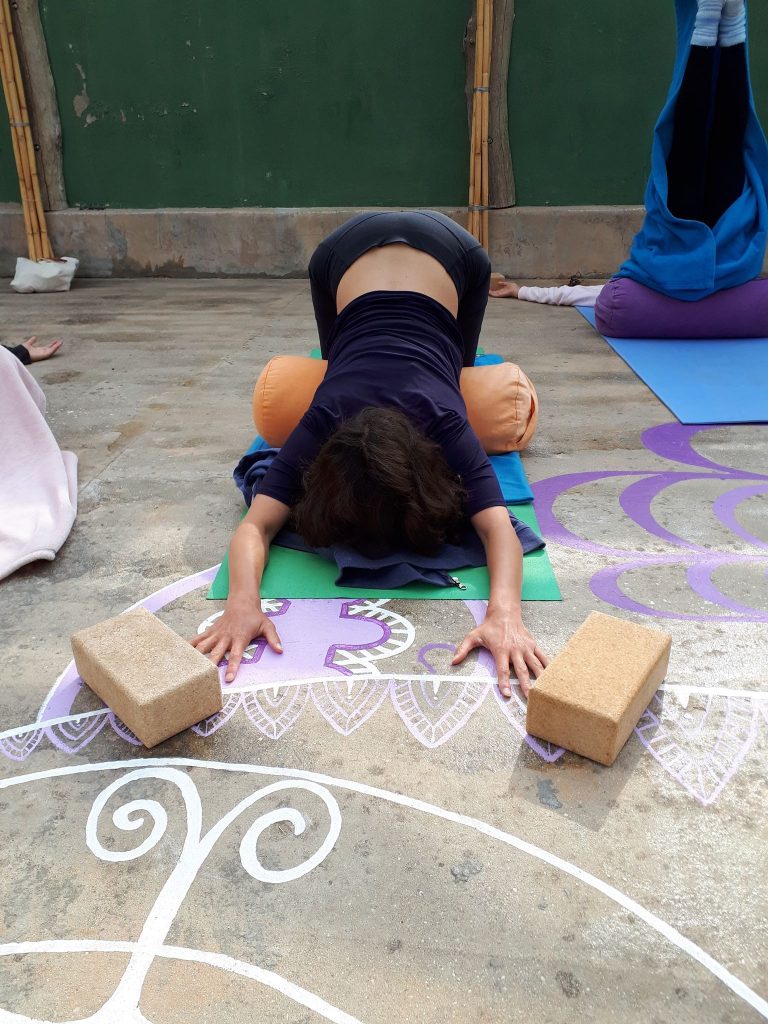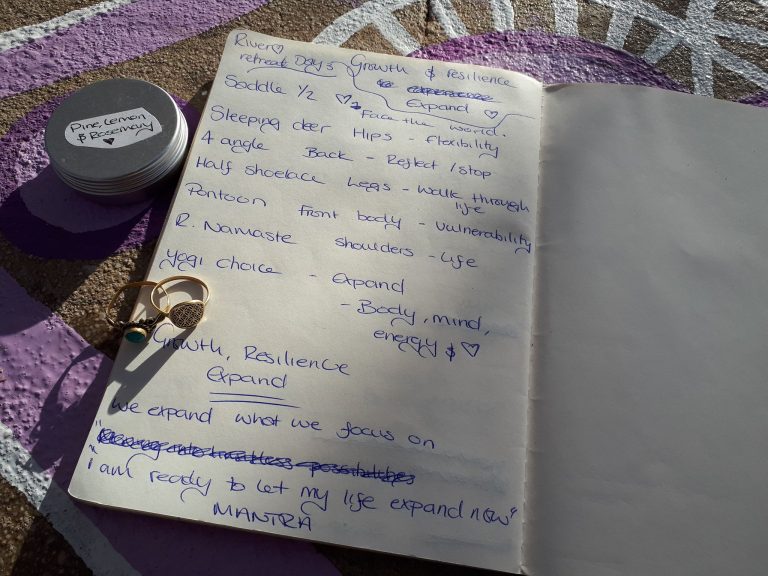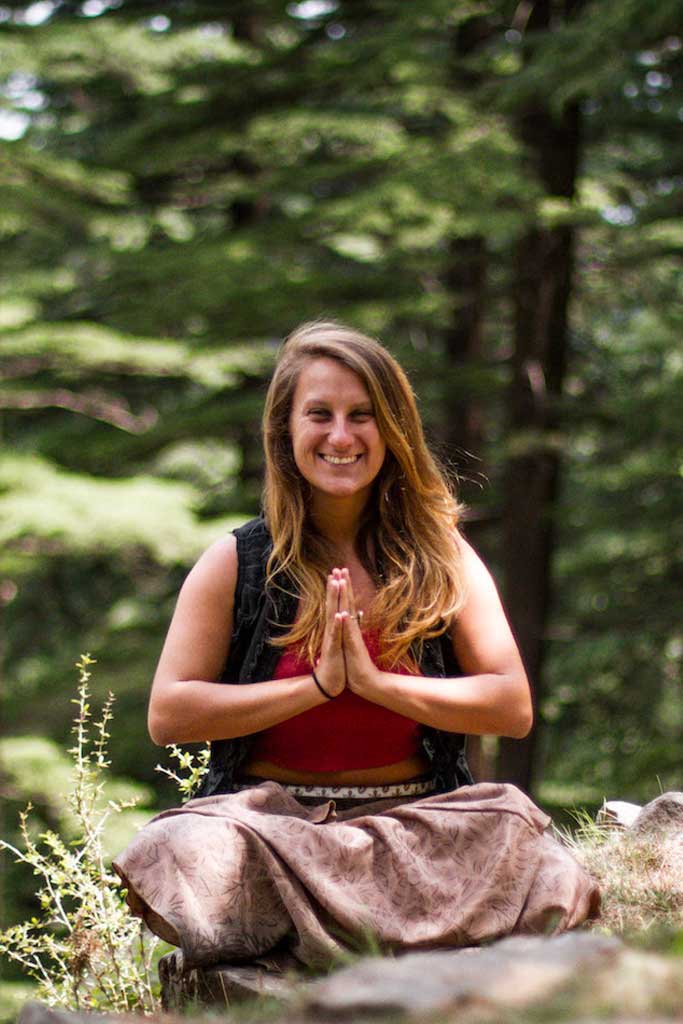A True Path of Yoga
~ It’s Philosophy, Roots & Meaning ~
Written by Becky Khalil
Many people come to Yoga because they want to control the mind, take a break from their hectic life or gain some motion or flexibility in their physical body. Don’t get me wrong, there is nothing wrong with having these motivations. However, to define Yoga by asana is like defining an entire city by one road.
The avenue which the large majority of people have used to enter their world of Yoga is Asana.
Asana is the third limb of Patanjali’s 8 limb system of Raja Yoga. Not only is Patanjali not one person, but Patanjali’s system of Yoga is just one system of Yoga. Although Patanjali is sometimes referred to as the “Father of Modern Yoga”, there are many more lineages, roots, histories and philosophies that make up Yoga.
Different systems of Yoga have different traditions and follow different patterns of practice. For example, Patanjali’s system of Yoga first the Yamas and Niyamas (moral conduct) must be practiced and perfected before asana is introduced. Yet in Hatha Yoga the Shatkarmas are traditionally practiced before the asana, in order to prepare and purify the body for physical movement and pranayama, towards higher states of consciousness.
So, whether you come to Yoga asana because you have lower back pain or you come to the depth of the traditional Yoga philosophy through your intellect, it is all study and connection of body-mind-prana-spirit. Inevitably, the one who comes to Yoga asana for some physical reason is likely to move beyond the asana at some point due to the sheer dimension of this ancient tradition being drip fed into the conscious and the subconscious mind through each Yoga session they take, (that is depending on whether they have a responsible teacher who shares the philosophy behind the practice).
What I am here to talk about today is how important moving beyond the asana truly is on the path of Yoga.
Take the example of driving through a city filled with different types of roads. There are some smaller roads, some one-way roads, some highways and some superhighways just outside the city. To transport yourself through the city thoroughly, you must use all types of roads. If you stick to just one type of road then it is likely that you will miss much of the city, and who knows how much….
We can use this analogy in Yoga. When we stick to one practice of Yoga (for example asana) we unknowingly limit ourselves to the law of potentiality. We remain hostage by ourselves by not integrating this tradition of health and healing into our life using all tools, techniques and systems. Not because we want to but because we become complacent or innocently ignorant to the truth of its true meaning and potential.
“You don’t see the view until you look through the looking glass”
What I am referring to here is that when you stay practising only asana you limit yourself to almost the entire world of Yoga.
“Yoga is not just the union of body and prana, it is the union of body and prana with Self” (Hatha Yoga Pradipika).
The purpose of Yoga is to awaken Kundalini energy, that lives at the base of the spine (Mooladara Chakra), and help her flow up the shushumna nadi (energy pathway) to higher realms of consciousness towards the crown chakra (Sahasrara). When the energy is established at the Sahasrara Chakra, that is called Yoga. Not Hatha Yoga – simply Yoga
(Hatha Yoga Pradipika).
There are many ways in how to awaken Kundalini and some are below:
– Asana
– Pranayama
– Meditation
– Mantra
– Shatkarmas
– Pancha Karmas
However, remember the analogy of the roads in the city. If you take just one type of road you will inevitably miss out of a large part of the city. Therefore, if you practice only one type of practice, you miss the opportunity to reach your highest potential through a true Yoga practice.
Therefore, in short, a true Yoga practice is deserving of a holistic approach. This is an approach that is fully rounded, encompassing all the different practices that Yoga has within its tradition. The lineage you follow will determine in which order the practices are traditionally placed. (More about this in another article).
I am not saying we must cram everything in to our daily practice or to race through each and every tradition pr style as fast as we can, no no no! Yoga is a lifelong practice and one that we can meander around fluently and fluidly, and this is what I am urging you to do. Meander around Yoga like it is a river flowing through the universe. It doesn’t get stuck in one place but it does continue to twist and turn using the same riverbed as its base.
Where most people start, as mentioned in the beginning of this article, is with Asana (that which is steady and does not move). However, we must also open our eyes to the fact that within asana we then also find the myriad of different styles, some more modern, some more traditional, some slow, some fast.
It is incredibly easy to find what is comfortable and stay there. One likes Vinaysa flow so practices flow all the time. Another likes Yin Yoga so practices Yin all the time. Another likes to combine a few and creates a Yoga asana cocktail. I say again, there is nothing wrong with this, if you want to stay in this place. But….the big question is do you want to open your life to truly experiencing Yoga?
“Hatha Yoga, Asana, and Pranayama are ultimately intended for developing the quality of human consciousness, not just the mind or body”
(Hatha Yoga Pradipika).
The goal is not just to simply practice Yoga but to inherently experience Yoga.
This is the true path of Yoga….
…..Are you ready?
Shanti Atma Yoga has a vast array of Yoga Teacher Training Courses to encompass all different aspects of learning, teaching and experiencing Yoga, as mentioned in this article. We value the true path of Yoga and are proud of offering such a diverse and in-depth plethora of training content. We honour the law of potentiality and we strive to bring as much of this into our training opportunities.
We have a variety of Yoga training’s that keep topping up your heart, mind and soul:
Yin Yoga Teacher Training Online:
Yin Yoga Teacher Training: 100 hour Functional Anatomy and Chinese Medicine
Yin Yoga Teacher Training: 100 hour Pranayama, Meditation and Mindfulness
Yin Yoga Teacher Training: 80 hour Yin Yoga and Yoga Nidra
Yin Yoga Teacher Training: 50 hour Neuroplasticity and Mindfulness
Yin Yoga Teacher Training: 50 hour Essential Oils and Emotional Intelligence
Residential Yoga Teacher Training:
Yin Yoga Teacher Training: 100 hour Functional Anatomy and Chinese Medicine
Yin Yoga Teacher Training: 100 hour Pranayama, Meditation and Mindfulness
Yin Yoga Teacher Training: 80 hour Yin Yoga and Yoga Nidra
Yin Yoga Teacher Training: 50 hour Neuroplasticity and Mindfulness
Yin Yoga Teacher Training: 50 hour Essential Oils and Emotional Intelligence
Yin Yoga Teacher Training: 200 hour 5 Bodies Approach
Yoga Philosophy: 100 Hour Life Management with Yogic Values of 5 Koshas
Locations:
Yin Yoga Teacher Training Bali
Yin Yoga Teacher Training Thailand
Yin Yoga Teacher Training India
Yin Yoga Teacher Training Spain
Yin Yoga Teacher Training Australia
Yin Yoga Teacher Training Guatemala
We also have a variety of Yin Yoga Retreats and Yoga Holidays:
Yin Yang Yoga Retreat Spain: Rest and Revive Retreat
Yin Yoga Retreat Bali: Sacred Space Yoga
For more information please contact us here










